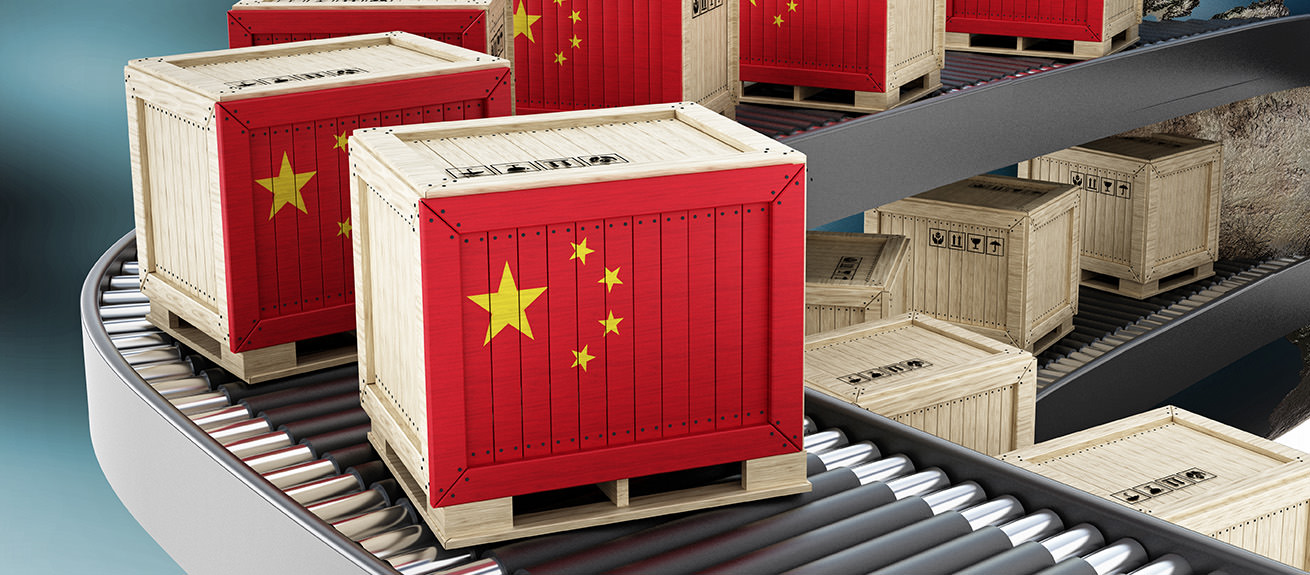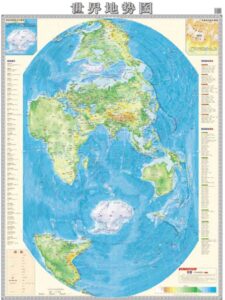Senior executives interested in changing geopolitical dynamics recently gathered in Lausanne to attend an IMD Discovery Event titled “Global Alert: Eurasia at a Crossroads in the New Global Disorder: Business Challenges and Implications.”
In recent years, world events have caught us by surprise. Who would have predicted political unrest in Catalunya? Or the purge of Saudi Arabian princes, ministers and top businessmen? Or Brexit? On a more fundamental level, the world has experienced the most dramatic transformations in centuries: changes in demographics, society, technology, science, ecology, economy, politics and geopolitics.
We are at a crossroads. The old global “Western” order is eroding but no new order has emerged to replace it. Instead, there is disorder. Will we transition to a more fluid and multi-polar world? Or will disorder breed conflict? These are unpredictable and unprecedented times. Non-business issues have never been so relevant to business as they are now, as Nik Gowing pointed out. Questions of responsibility and “license to operate” have put social issues at the forefront for CEOs. It is urgent to question existing practices and explore new ones – in other words, to think the unthinkable.
What about the big picture? Here again, there are catalytic forces for realignment. As Suddha Chakravarthy and Nina Ninkovic highlighted, national security is undergoing a paradigm shift. In the past, the essential questions were: How strong are my armies? How strong are my allies? But countries must now focus on issues such as food security and water security.
Most importantly for this discussion, we are witnessing a shift in the balance of world power toward Asia. In order to “think the unthinkable,” we must be ready to react to unexpected developments in Asia: with a bellicose North Korea and a dominant Russia, for example, surprises may be in store. And what about the Middle Kingdom? The new battleground for China is maritime shipping lanes, and China is eager to develop its soft power through ambitious initiatives such as the new Silk Road. How will China’s agenda impact the world’s agenda in the near future?
From quantity to quality: Innovation in China
China, the world’s manufacturing powerhouse, is transitioning from lower-value production to higher-value activities. The country is on a trajectory to become one of the world’s major sources of innovation 10 years from now, according to Georges Haour, and particularly so in the digital internet space, where it has already established a leading position. How fast is China’s ascendancy? In 2014, eight Chinese firms were valued at over $1 billion. These included DiDi, Mobike and Xiaomi. Today, there are 56 “unicorns” – startup companies valued at over $1 billion. And Forbes recently named a biotechnology firm from Shanghai, specialized in blood products, as one of the top five most innovative companies in the world.
On a national level, China has realized that registering an astronomical number of patents is not the magic bullet to driving innovation. From a quantity game, which involved registering many mediocre patents, China is diligently shifting to high-quality technology and process innovation. For example, Chinese firms now lead the world in wind and solar energy technologies, and intellectual property in these areas is growing apace. The fintech industry in Shanghai is twice as big as in Silicon Valley.
The old paradigm of Chinese copy-cats is changing. Chinese companies are very effective at absorbing external knowledge but they are no longer just copying good designs developed elsewhere: they are adding value by adapting products for Asian markets and improving them significantly. Firms are also developing indigenous innovation and, for example, in the case of Shenzhen, creating collaborative supplier ecosystems that brainstorm together to innovate for their customers. Fierce competition in the Chinese market, along with the strong entrepreneurial spirit of emerging players, are shaping China’s innovation landscape. One of the few brakes on this acceleration of innovation is access to talent. There are 700,000 graduating engineers in China every year, however, the quality of these engineers is unproven; do they have the skills to work in multinationals?
Silk Road Redux: China’s colossal infrastructure and trade project
China has made significant progress on the Belt and Road Initiative (BRI) since it launched the project in 2013. With close to a trillion dollars invested across the globe, this initiative may grow into the largest infrastructure project ever undertaken. What is the Belt and Road Initiative, exactly? The BRI’s first element is the land-based “Silk Road Economic Belt” that connects China with Europe via Central Asia and the Middle East, including railways, bridges, overland trade corridors, power transmission lines and data-transfer links. The second element is an oceangoing “Maritime Silk Road”: a network of ports and coastal infrastructure that will ease commercial trade along shipping routes through South Asia, East Africa and the northern Mediterranean
What larger purpose does the BRI serve? Shaihua Wallace Cheng outlined five major goals for creating a 21st century Silk Road. China’s explicit reason for reviving the Silk Road is to contribute to global peace and prosperity. This includes unimpeded trade, financial integration, policy coordination, “people-to-people” bonds across nations and, most tangibly, connectivity of facilities via enhanced infrastructure. A Chinese proverb advises that “If you want to become rich, you have to build a road first.” China is interested in building global prosperity but it is also focused on its own economic development: China’s secondary goal is to develop its vast western region, which has lagged far behind coastal regions due to its distance from markets, difficult inland access, fewer resources and different mindset.
With close to a trillion dollars invested across the globe, the Belt and Road Initiative
may grow into the largest infrastructure project ever undertaken.
Analysts have also articulated three implicit reasons for China to launch the BRI. The first is to respond to geopolitical challenges. A tightly knit network of trade and government cooperation offers greater protection in times of crisis as well as stronger influence in the global power game. Some observers have compared the initiative to a new economic version of NATO, from the Eastern side. Another driving force behind the initiative is to develop export markets. China can thus “digest” its industrial overcapacity through international outlets, as Marc Laperrouza pointed out. The third and last implicit reason for China to launch this colossal project is to obtain diversified access to resources. China has a huge appetite for raw materials. As the world’s reserves are being depleted, countries will find it ever more difficult to obtain the resources they need for industrial production, not to mention foodstuffs to feed their expanding populations.
Will the newly developed overland Silk Road reduce maritime shipping? Probably not, as China is also investing heavily in sea ports. Both routes will have advantages and disadvantages: the land-based network will be faster but more expensive, and may also carry higher risk because of potential political turbulence in the countries it passes through. The oceangoing trading route will likely be slower but more secure. Overall, the “belt” and the “road” components of the initiative are designed to be complementary.
Looking ahead, a modern Silk Road will change geopolitical dynamics in both subtle and conspicuous ways. In the words of Albert Einstein, “Nothing happens until something moves.” With its ambitious push for intergovernmental cooperation and mammoth investments – $900 billion in projects are planned or underway, according to Fitch – China is definitely moving! How can governments and businesses prepare for these changes? The first step is shifting to a wider perspective in order to see the big picture. Optimistically, the BRI may usher in a new approach to international relations, one that does away with boundaries and old enmities. In this cooperative scenario, everyone can be a friend as long as the players are pragmatic and embrace a long-term goal of achieving peace and prosperity. What is certain is that the BRI will bring many new business opportunities. And with China’s growing influence in both trade and international politics, we can expect it to become a new center of gravity for emerging countries. By involving many different countries in what it terms a “symphony of all relevant parties,” China is also encouraging a very diverse set of nations – old and new, poor and wealthy, democratic and less democratic – to collaborate fruitfully. In a certain way, the modern Silk Road will also challenge the youth in these countries to rise to the challenge of solving the world’s problems. In short, the world will be a less boring place because of this initiative.
By involving many different countries in what it terms a `symphony of all relevant parts,` China is also encouraging a very diverse set of nations – old and new, poor and wealthy, democratic and less democratic – to collaborate fruitfully.
Potential derailers
With burgeoning innovation and a sophisticated new Belt and Road network, can we expect China’s star to rise smoothly in the new world order? Some obstacles remain. An obvious challenge is prickly neighbors. Apparently, India is irate because the new Silk Road will pass through contested, Pakistani-controlled Kashmir. Russia is leery of collaboration between the ex- Soviet republics of central Asia and other world powers such as China. A second major risk for the BRI lies in governance issues: transparency, political practice, financial risks and so on. A third derailer, and potentially the most dangerous for China, is environmental degradation. Air, soil and water pollution are increasingly problematic for the Chinese population.
As America adopts a more individualistic and protectionist stance in its foreign policy,
China has positioned itself as the new champion of economic globalization.
How does the US view China’s ascendancy? For the moment, it has limited itself to observing progress on the BRI from afar. But tensions may rise in the future. Despite its decline as a superpower, the US continues to loom large over the Eurasian continent. In foreign policy circles, the hot topic is: can China and the US avoid the “Thucydides Trap”? The Greek historian Thucydides observed that when a ruling power is increasingly matched by a rising power, such as when the ancient city of Athens challenged Sparta, the rivalry usually ends badly for both nations – violence, war, destruction. Historians at the Harvard Belfer Center for Science and International Affairs analyzed historical records of the last 500 years and concluded that only in 4 out of 16 cases did the two parties avoid war. And the rivals that did avert war were only able to do so at the cost of painful mutual adjustments, both in terms of actions and attitudes. What will happen in this case? The future is an open question. The interesting contrast is that, as America adopts a more individualistic and protectionist stance in its foreign policy, China has positioned itself as the new champion of economic globalization at Davos.
An outsider’s guide to understanding China
For both businesses and political observers, it is not always easy to predict China’s future economic and policy-related directions. Outsiders can also be baffled by intercultural differences. To help dispel some misconceptions, Diego Gilardoni outlined several important Chinese traits. To begin at the beginning, Chinese culture has been shaped for centuries by the Confucian values of order, hierarchy and loyalty. Based on this history, there is little likelihood that the Chinese will spontaneously switch to a multiparty system of government.
The second important trait is a long-term orientation. China has lived through dynasties, countless wars, glorious triumphs and severe setbacks. They have seen it all, and therefore tend to take a long view of history. When Kissinger asked Zhou Enlai “What do you think was the impact of the French Revolution?” he reportedly replied, “It’s too early to tell.” The third trait is pragmatism. The Chinese government’s experimentation with free-market zones is one example of its pragmatic and gradual approach to economic openness.
Lastly, the Chinese mindset allows for the integration ofopposites. If one looks at the symbol of the ying and yang in Taoism, black and white are not opposites: they keep integrating and balancing each other. However, much of Western thought is rooted in the classical Greek logic, which teaches that logical processes are linear and exclusive. This often leads observers to create false dichotomies. Outsiders will ask “What does China believe in: the state or the market?” whereas the Chinese believe that either or both can play a role, depending on the situation. Likewise, the clear-cut contrasts of democracy versus authoritarianism and good governance versus bad governance are not perceived in the same light.
Optimist? Pessimist? Realist?
With such global issues as geopolitics, world trade and cultural differences, there are few absolute certainties. That is why, although we do not have all the answers, it is important to at least identify the pertinent questions! This can help us, in the business community, to avoid becoming too ensconced in conventional paradigms.
In this context, it is also important to eschew concepts such as optimism or pessimism, and instead focus on realism. Dramatic transformations on many levels are occurring, and for this reason it is ever more valuable to share information and challenge each other by discussing opposing points of view.
Lastly, Manu Jindal reminded fellow executives that a healthy future for global businesses must include sustainability: “Compliance is no longer enough, you need to differentiate!” Rather than being an optimist, a pessimist, or even a realist, he identifies himself as an “operationalist”: someone who tackles specific projects in order, for example, to make agribusiness financially sustainable for farmers as well as investing to make supply chains more resilient to shocks. On a strategic level, the challenge for executives is to know how to both “zoom in” to operationalize good initiatives within their companies and to “zoom out” to see changes arriving on the geopolitical horizon.
Discovery Events are exclusively available to members of IMD Nexus. Learn more about IMD Nexus


